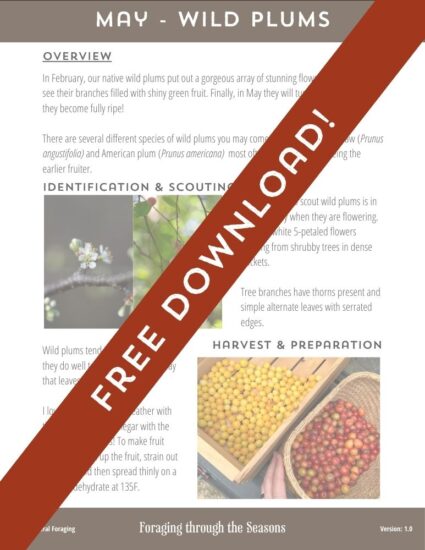Wood sorrel (Oxalis), aka sourgrass, or my favorite name, “Nature’s Skittles”, is an amazing edible wild plant!
This is one of the best plants for beginner foragers because they are easy to find, easy to identify, and extremely common!
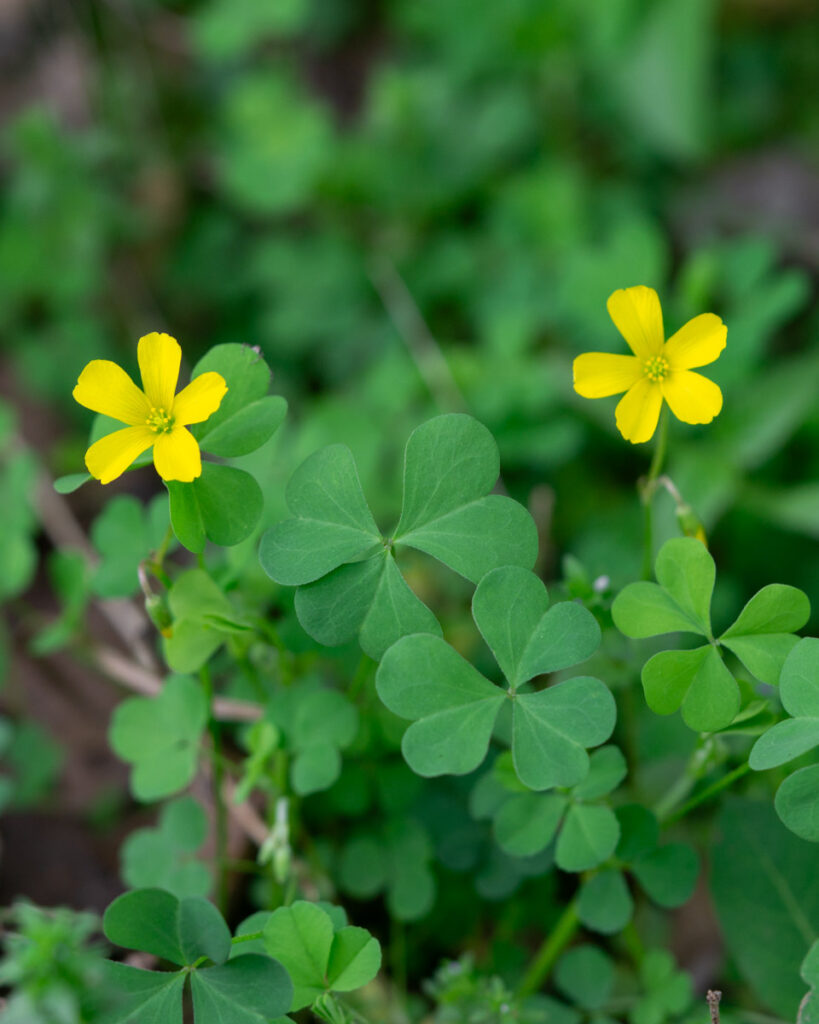
In this comprehensive article, I’m going to show you how to identify them, where to find them, ways to use them (some you may not have heard about), and debunk some of the myths surrounding wood sorrel “toxicity”.
What is wood sorrel?
Wood sorrel generally refers to a plant in the genus Oxalis. There are over 500 species in the genus, and they can all be used in similar ways. This article will focus on two main species: Common Yellow Wood Sorrel (Oxalis stricta) and Violet Wood Sorrel (Oxalis violacea).
Other notable species include:
- Oxalis corniculata: Creeping Woodsorrel
- Oxalis pes-caprae: Bermuda Buttercup
- Oxalis acetosella: European Wood-Sorrel
- Oxalis dillenii: Slender Yellow Woodsorrel
- Oxalis debilis: Largeflower Pink-Sorrel
Etymology and names
There are many common names for wood sorrel, like sourgrass, or my favorite, nature’s skittles!
Oxalis comes from Greek oxus which means “sharp, pointed,” in reference to the sharp sour flavor.
True “sorrel” are actually Rumex – Dock/Sorrel species. The common denominator is that they are both sour-tasting greens. The term sorrel comes from French sur and PIE “sura,” meaning “sour” (Etymology Online).
History
An interesting mention in King’s American Dispensatory is that one can drink a mixture of chalk (calcium carbonate) with water if one eats too much wood sorrel. This is likely because calcium was believed to counteract the oxalic acid!
There are many mentions of Native American tribes consuming the plants both raw and cooked. One reference kept popping up that they bulbs were fed to horses to make them faster. I have no idea if that works, but horse owners, might be something to try (Source: Native American Ethnobotany).
Identification
Wood sorrel are easy plants to recognize. If you know what details to look for! Below you can see a graphic highlighting some of the important ones. We go into more detail below.
You can find a high-res version of the below graphic for free on my Patreon page!
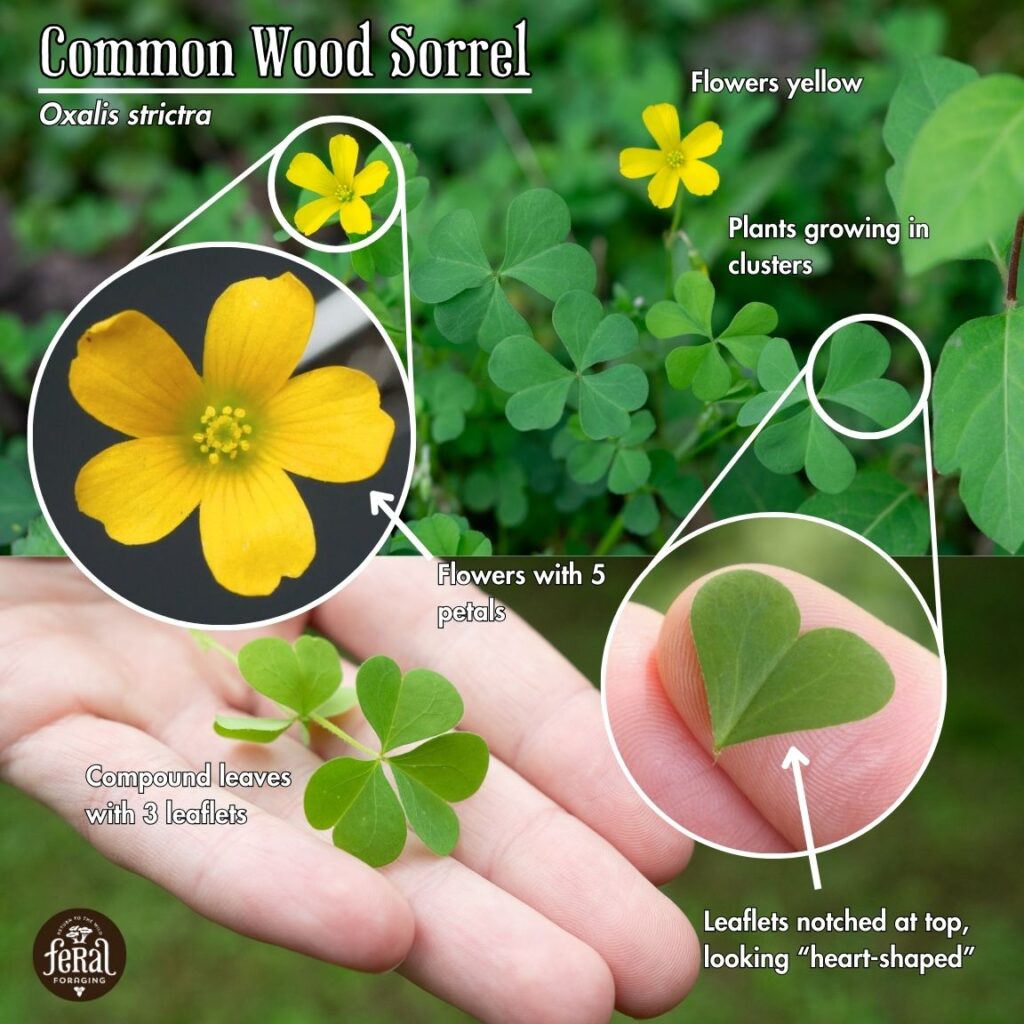
Leaves
To me, their two most iconic features are trifoliate compound leaves with notched, “heart-shaped” leaflets. You may think that the leaves somewhat resemble what you know of as “shamrock,” which we’ll discuss further later!
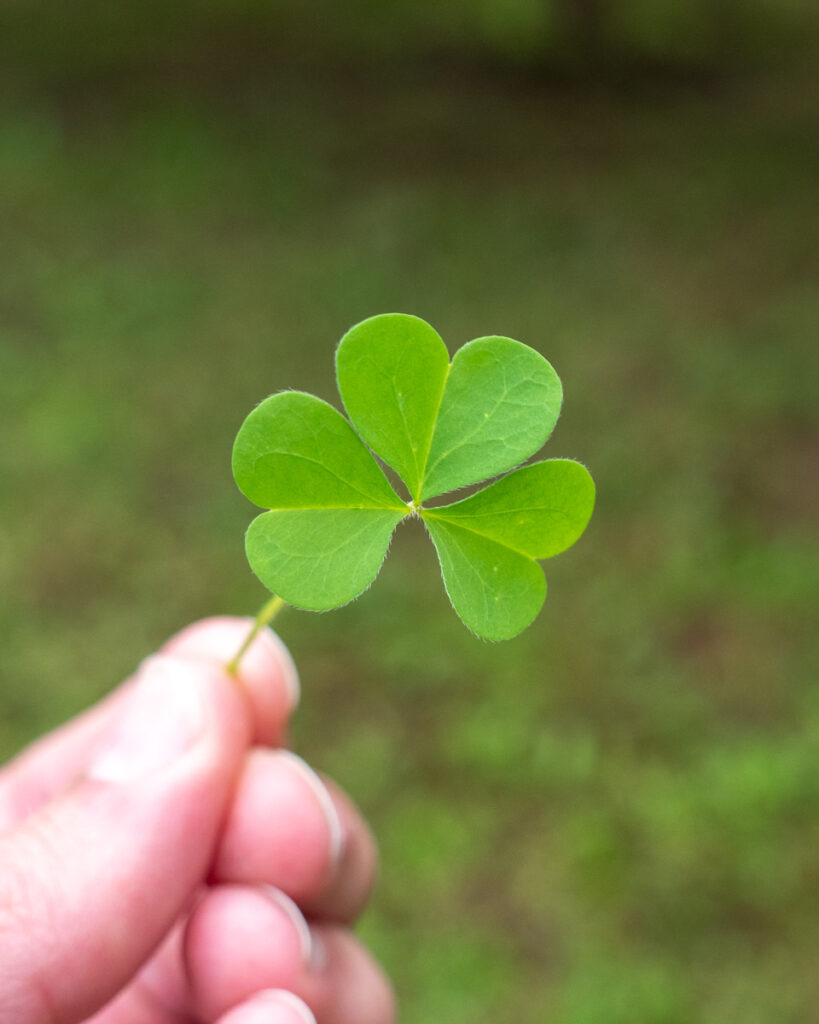
Below you can clearly see a single heart-shaped leaflet of wood sorrel. Remember, this is not a leaf itself, but part of a leaf!
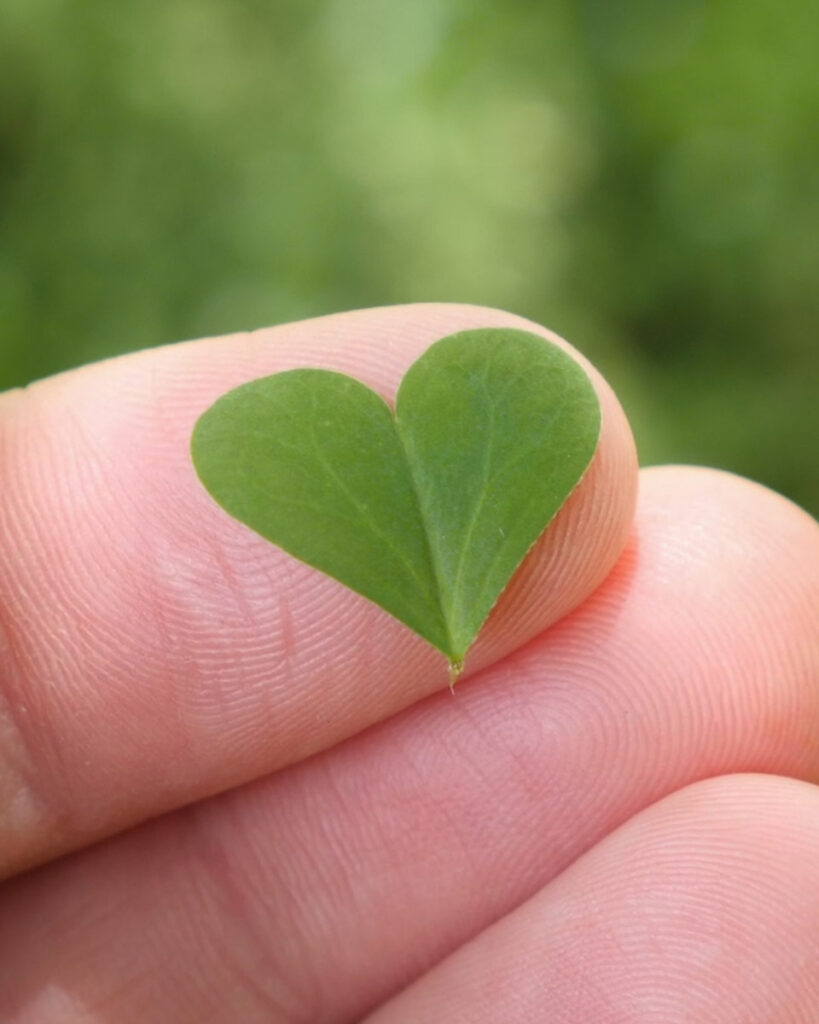
Flowers
The flowers of wood sorrel range from yellow, to pale purple, to a vibrant pink! What they all have in common is five petals, five sepals, and ten stamen!
You can see a detailed view below.
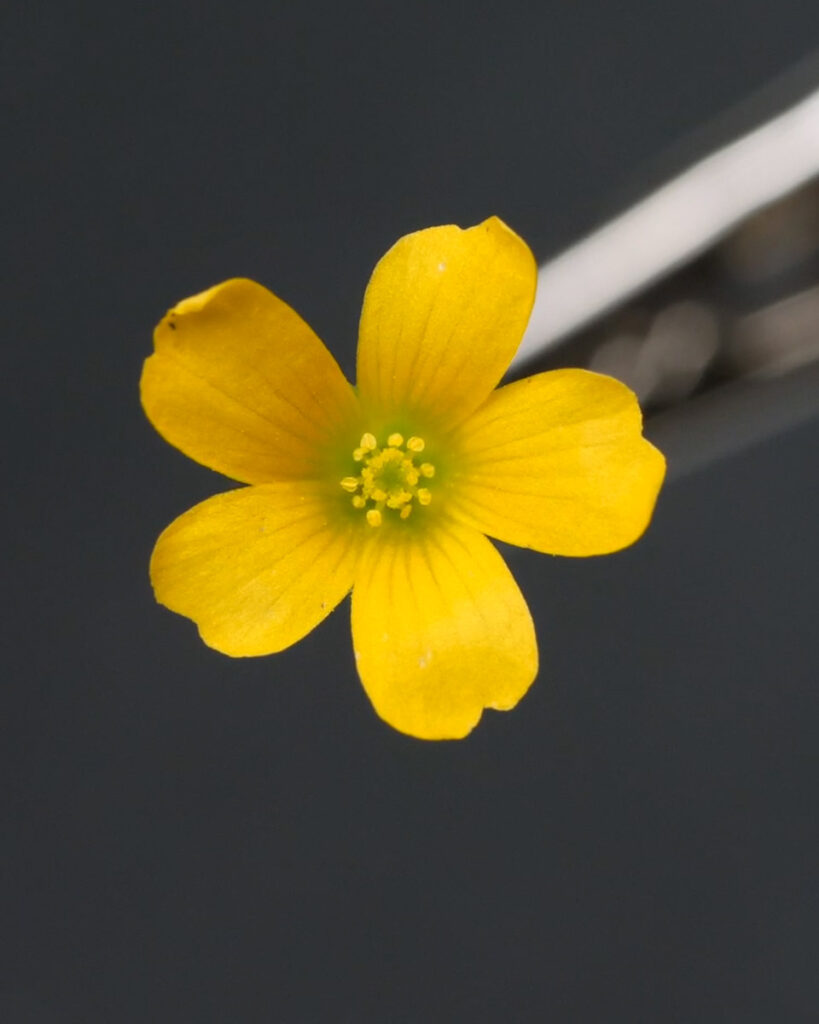
Fruit
Wood sorrel has long “capsule-like” fruits. Depending on whether the species is annual or perennial they may produce hundreds of seeds or only a couple dozen. (The annual ones produce more)
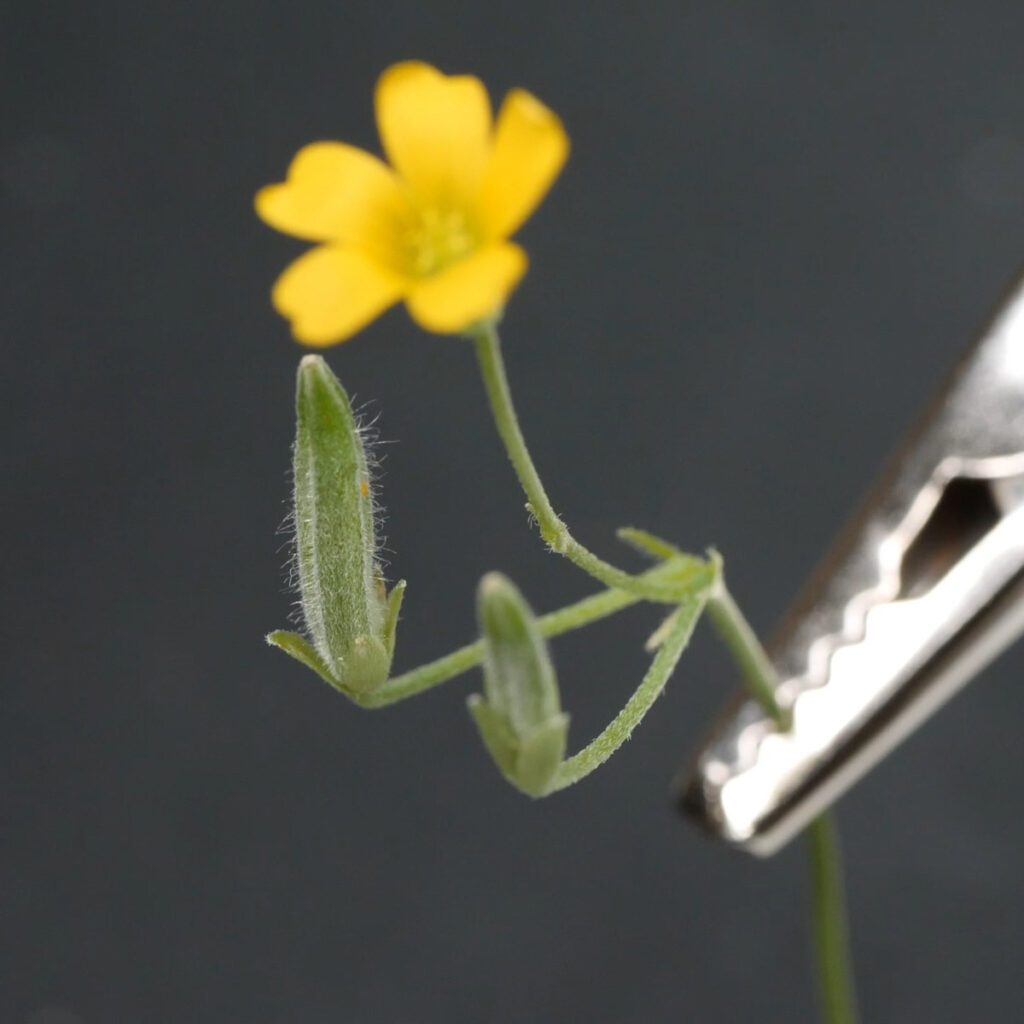
Wood sorrel identification overview:
- Flowers: five-petaled, with varying colors, typically yellow to pinkish in hue; five sepals, ten stamens, and a fused carpel
- Leaves: compound trifoliate leaves are alternate, individual leaflets are usually distinctly heart-shaped. Some species have greater than three leaflets, but the vast majority is trifoliate
- Fruit: long, capsule-like fruit
These generally work for the vast majority of wood sorrel, but there are some notable exceptions to the leaflet count. For instance, Oxalis tetraphylla has four leaflets per leaf and Oxalis decaphylla has a whole ten leaflets per leaf!
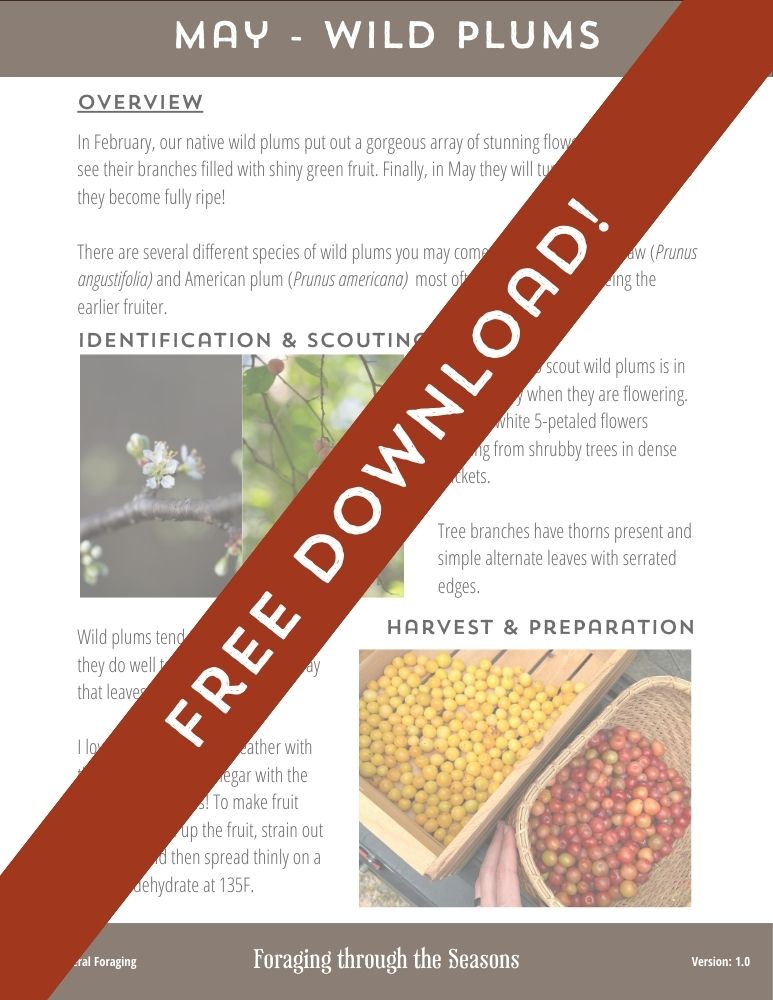
Get my foraging guide!
Learn an amazing wild food for each month of the year with my guide, Foraging through the Seasons!
Enter your email below to have this FREE guide sent straight to your inbox!
Lookalikes
While wood sorrel are easy to recognize, there are a couple of important similar-looking plants to be aware of. With just a few details, you’ll be able to tell them apart easily!
White Clover - Trifolium repens
Wood sorrel is not the same as clover, this is a common confusion. Wood sorrel and clover are not closely related at all, but they are commonly confused because they both have trifoliate compound leaves.
Many articles about clover will wrongly use photos of wood sorrel, further contributing to the confusion!
Here are two details to easily distinguish them:
- White clover has leaflets that are not deeply notched (not heart-shaped)
- White clover has compound flowers vs the simple 5-petaled wood sorrel flowers.
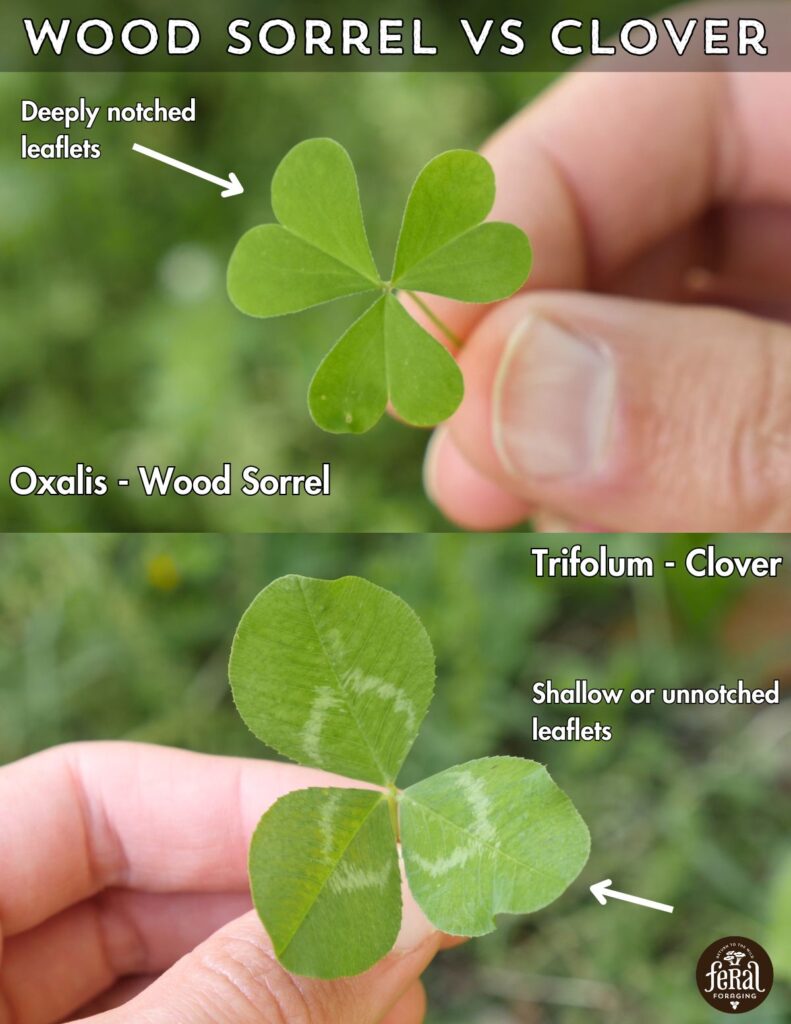
Black medic - Medicago lupulina
Similar to the comparison for clover:
- Black medic also lacks deeply notched leaflets
- Black medica has compound, not simple flowers
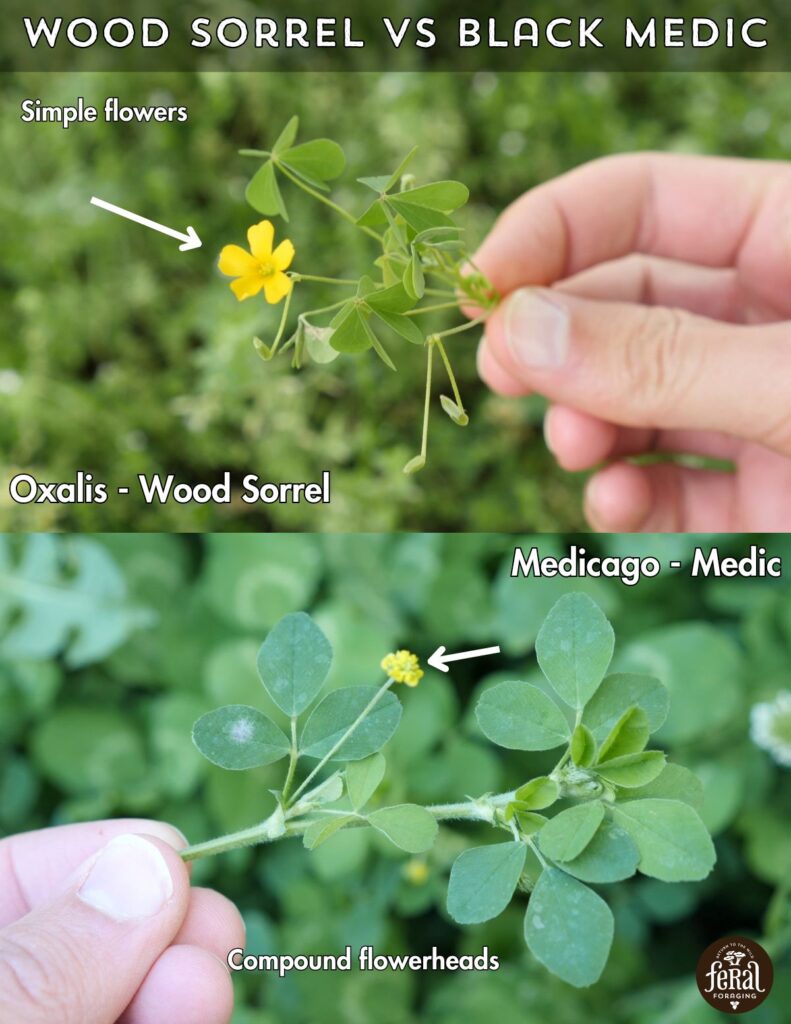
Buttercup - Ranunculus
This may not be as close of a lookalike, but I’m including it because they are toxic with similar yellow flowers that often grow right next to wood sorrel plants.
Make sure to follow the flowers down to the leaves which are very different in form, being pinnately compound rather than palmate with wood sorrel. Further, the petals of buttercup are distinctly shiny, something that wood sorrel flowers lack.
Summary:
- Buttercup has pinnately compound leaves vs palmate compound with wood sorrel
- Buttercup has distinctly shiny petals; they glisten in the sun, wood sorrel does not

When to find wood sorrel
Many species, particularly annual ones like Oxalis stricta, can be found nearly year-round.
However, others, like Violet wood sorrel and similar species, are perennials and go dormant when the weather gets hotter.
You can use my Interactive Forager’s Calendar in order to get a better idea of the timing if you’d like to find it!

Where to find
Where wood sorrel plants are found depends on the species. Wood sorrel can grow in various locations:
- Disturbed habitat
- Woodland settings
- Suburban lawns
Species like Upright Yellow Woodsorrel are often found growing right in your lawn and other open areas!
Species like Violet Wood Sorrel are instead located in more mature woodlands and forests.

Edibility
All parts of wood sorrel are edible: the leaves, stems, flowers, seed pods, and even tubers! (Though not all species produce a large tuber) In addition, all species of wood sorrel are edible!
This is one of the many benefits of wood sorrel. Wood sorrel has an incredible sour taste. My favorite species for flavor is Violet Woodsorrel, which is exceptionally tangy!
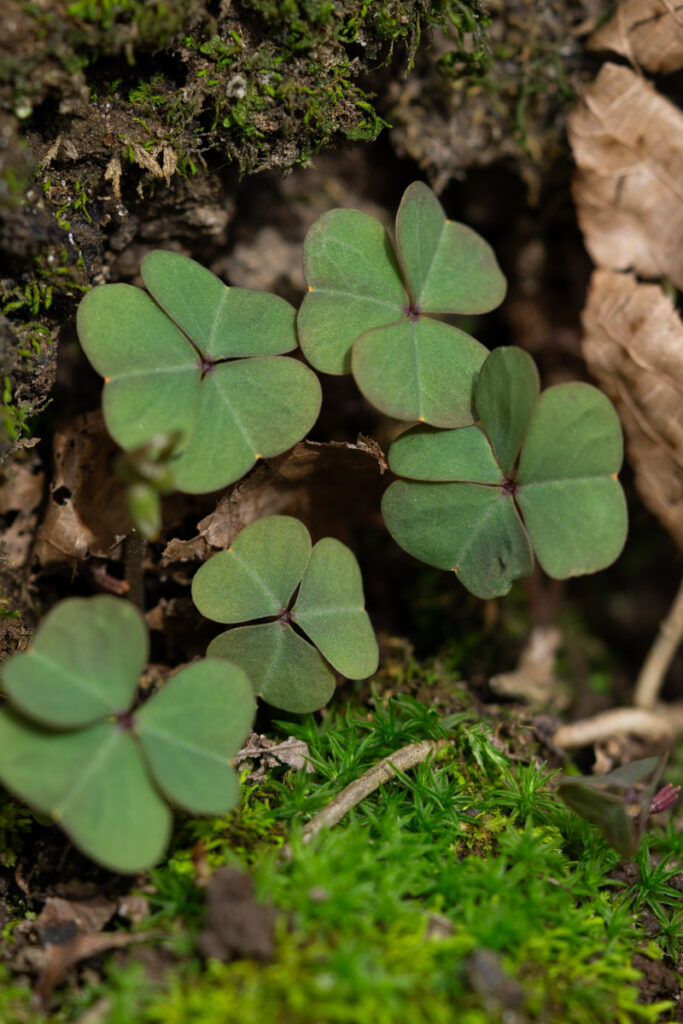
However, it’s best to harvest perennial species like Violet Woodsorrel with care and only take what a population could easily replace.
Wood sorrel can be eaten raw or cooked. Here are some of my favorite ways!
- Garnish for salad
- Trailside snack
- Main dish topping
- Sour drink hot infusion

Wood sorrel tea
This is my favorite way to consume wood sorrel! I’ve tested several different preparations.
First I tried a cold infusion with the blended leaves. This worked okay, it was kind of like a sour-cucumber drink.

Next, I tried to dehydrate the leaves and make tea with them. This was decent as well, but not my favorite.

By far, my favorite with the best flavor was a hot wood sorrel tea made directly from fresh leaves.
Here is how I make it.
First, gather your fresh leaves and place them into a container.
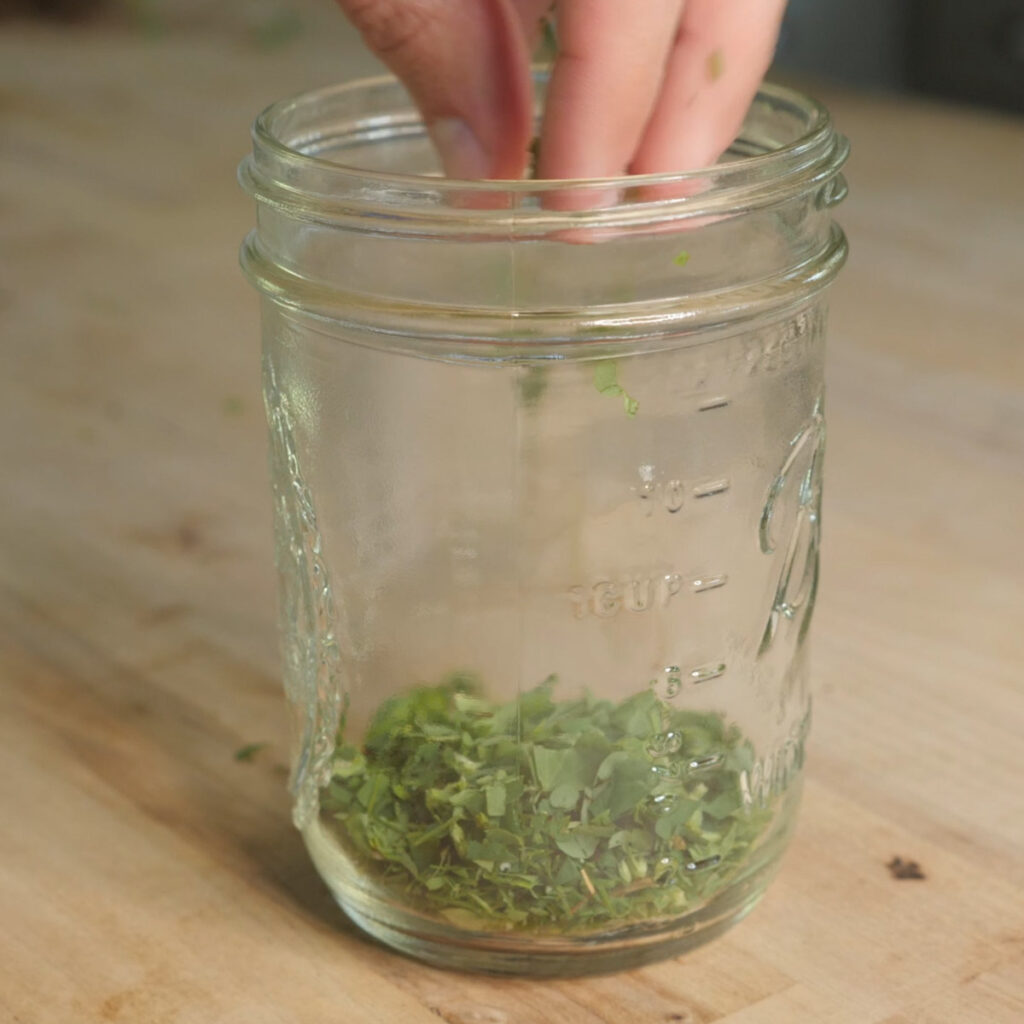
Next, pour over boiling water and let it steep for 5-15 minutes.
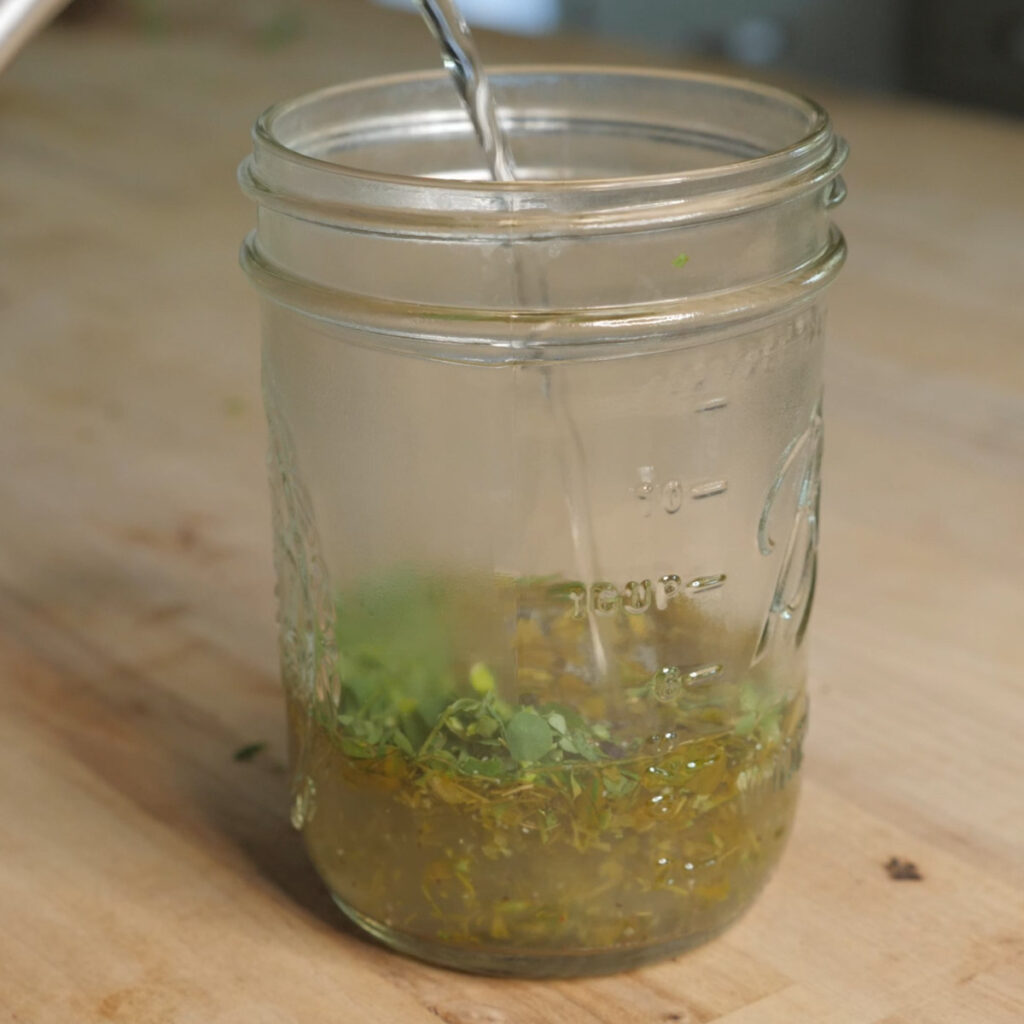
After that, strain out the solids. Now, you’re ready to enjoy!
You can add some sweetness if you’d like to complement the delicious sour flavor.
It can be drank hot or with ice to make it an iced-tea!
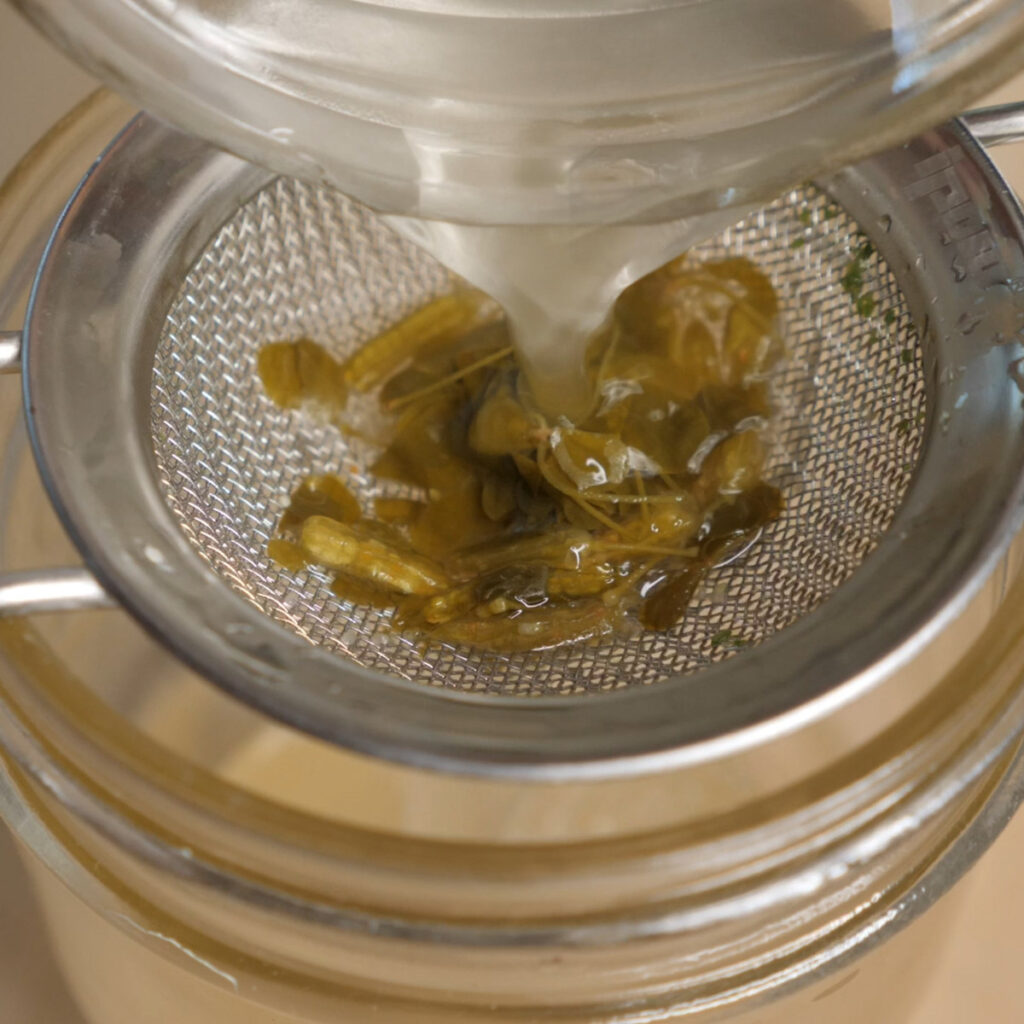
Here is a summary of the recipe:
- Gather wood sorrel leaves.
- Place leaves into a container.
- Pour over boiling water (1:3 ratio).
- Let it steep for 5-15 minutes.
- Strain, sweeten to taste, and enjoy!
- Optional: add ice to make a cold refreshing beverage.
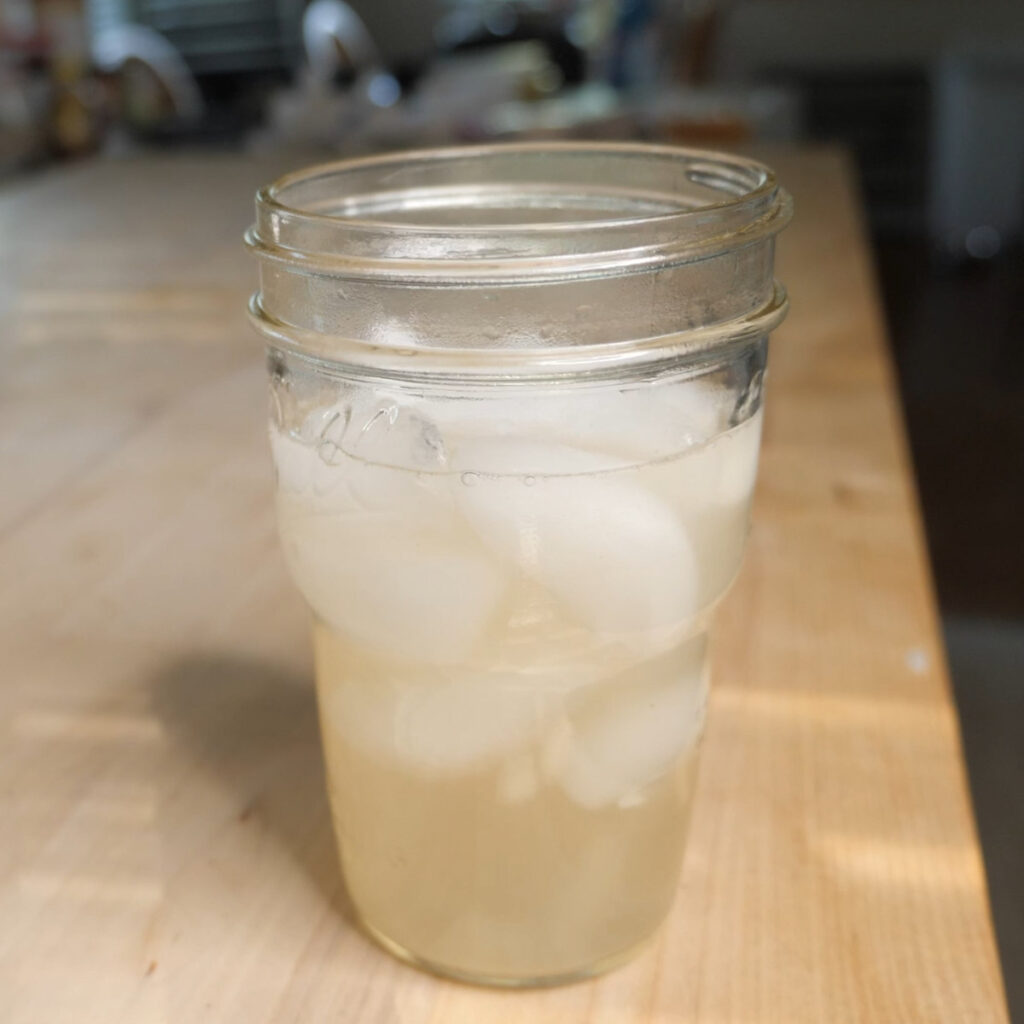
Medicinal uses
To me, there aren’t any major medicinal uses of wood sorrel that stand out.
That being said, they contain some amount of ascorbic acid, so can be used to prevent scurvy, if you ever find yourself in such a situation!
There are also mentions of the plant being used to quell thirst and even some external uses for sores (Source: Native American Ethnobotany).
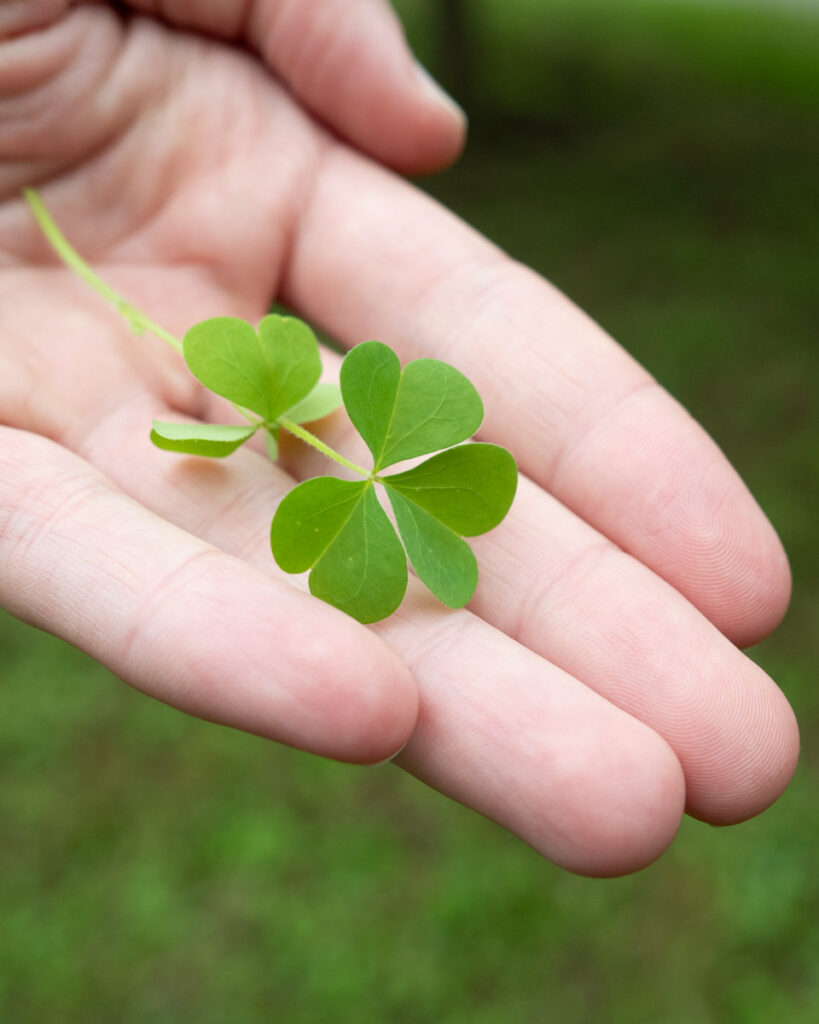
Chemistry
Wood sorrel contain oxalic acid, the chemical was actually named after these plants (Oxalis) as it was first isolated from wood sorrel.
Finally, in 2024, we got a paper that directly reports the oxalic acid content in a species of Oxalis, O. pes-caprae, which contains approximately 102mg/g (dw) (Source: MDPI).
They also gave good values for moisture content, so we can estimate the fresh weight content would be around 22.42mg/g.
This allows us to directly compare wood sorrel content to that found in a thorough investigation of spinach (Source: HortScience). The study found oxalic acid content to be roughly 84.5mg/g (dw) and using (Source: ResearchGate), we get a moisture loss of 86.7% to give us a fresh weight content of 11.24mg/g.
These values will be used in the Safety section.
Source of the sour taste
Wood sorrel is known for its sour taste, which is often attributed directly to oxalic acid; however, I believe that the presence of other acids, such as citric acid, (or ascorbic acid) could contribute to the flavor as well (Source: PubMed)!

Safety
You may have heard that wood sorrel should only be consumed in moderation? Let’s explore why that is and if it is valid or not.
From what we’ve established in the Chemistry section, we can get a good idea of the amount of wood sorrel that is safe to eat.
While dozens of articles will tell you to only eat wood sorrel in moderation, they won’t tell you what that amount is! So we’re going to do things differently!
If we use spinach as a reference, then likely we could consume around 30 grams of wood sorrel in a day multiple times in a week. Why? Because multiple recipes for “green-smoothies” that people consume often contain roughly 60 grams of spinach. It would take 30 grams of wood sorrel to get the same amount of oxalates as spinach contains half the oxalate content per fresh weight.
You will never be able to forage that much wood sorrel unless you go very far out of your way!
I tested this myself and 30 grams of wood sorrel is about triple what I would normally forage even if I was consuming what to me is a large amount.
I would go so far as to say that there is little need to even warn people about moderation with consuming wood sorrel as there are too many barriers before that would even be a concern.
You don’t see articles for those green smoothies going out of their way to warn people about oxalates, which likely would be responsible for FAR more oxalic consumption than wood sorrel ever could.
Beyond that, the dangers of oxalate consumption for the vast majority of the population are likely overblown. Other factors like sugary drink consumption, obesity, and a sedentary lifestyle are more likely to be contributors to kidney stone formation.
TL;DR – Wood sorrel is safe to consume for the vast majority of people!
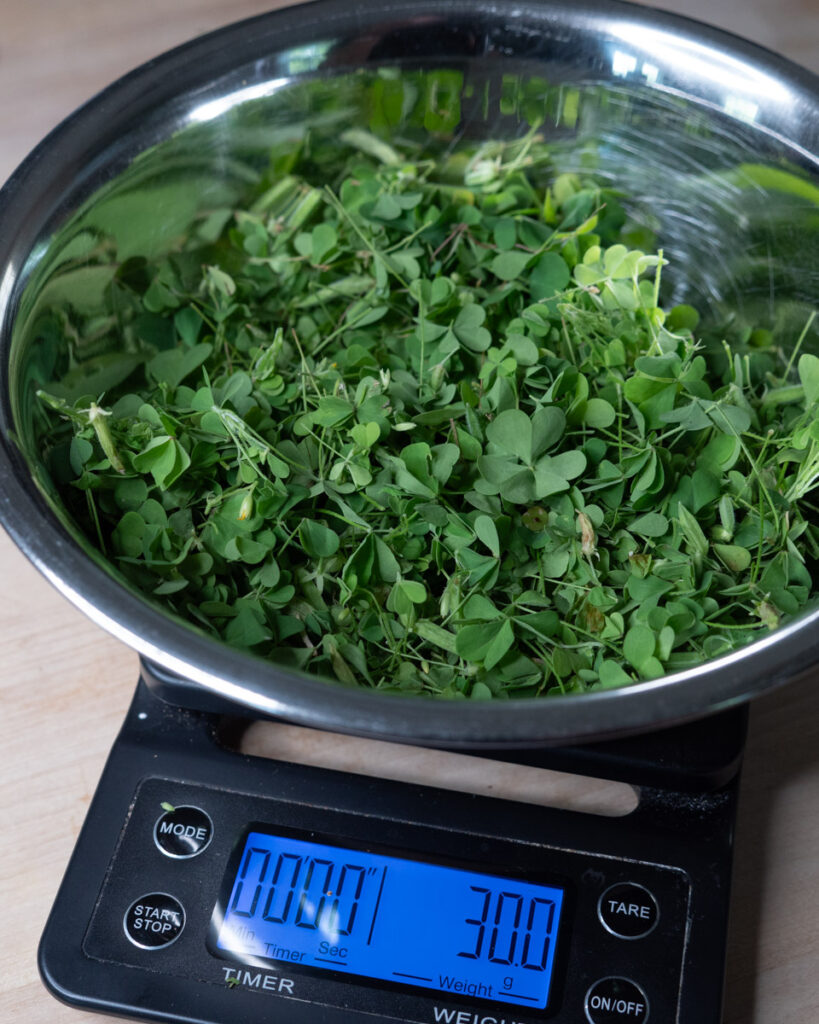
Is Shamrock wood sorrel?
There is a lot of confusion about this. An important thing to note before we get started is nobody actually knows what Shamrock truly is. We have some guesses based on historical texts in Ireland, but not a definitive answer.
That being said, based on the way that shamrock is often represented, I would say that wood sorrel is the best candidate for it! You can see in the below photo with the notched leaves, the classic form of wood sorrel.

Closing thoughts
I think wood sorrel is a fantastic wild food and herb that more people should know about!
If you haven’t eaten it before, you are missing out!
Wood sorrel is FAR safer than many articles would lead you to believe, which is mainly due to misattributed fears of wild food.
I hope you learned something new in my article. I’ll see you in the next one!




